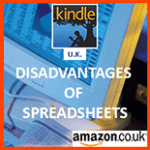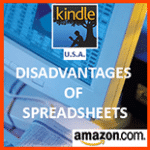It doesn’t take a genius to understand why spreadsheet reporting still pervades the enterprise despite the rise of a complex but highly effective IT solution known to big shot CIOs as Business Intelligence or BI.
If you’re still in the dark as to what BI is, don’t worry because we?ll enlighten you shortly.
Business decisions from disparate data sources
In the meantime, let’s talk about how you make business decisions. If you’re a top executive, then you make decisions based largely on reports submitted to you by your managers, department heads, and so on. They in turn obtain information from different sources, like the company ERP and CRM as well as other external sources (e.g. market surveys).
Now, before their reports ever reach your desk, a lot of data is extracted, shared, filtered, analysed, consolidated, and summarised so that they become actionable information. In all these activities, one software tool gets to take part in most of the action – the spreadsheet.
The problem with spreadsheet reporting
The problem with spreadsheets is that they have very poor built-in controls. Thus, they are susceptible to human errors and are vulnerable to fraud. What’s more, collecting data and manually consolidating them into spreadsheets can be very laborious and time consuming.
If you don’t get accurate, reliable information, your judgement will be fuzzy and your business decisions compromised. In addition, if you don’t receive the information you need on time, your business will constantly be at risk of breaching critical thresholds, which may even force it to spin out of control.
Business Intelligence – actionable information on time
This is mainly the reason why large companies implement Business Intelligence systems. BI systems are equipped with built-in features like reports, dashboards, and alerts.
Reports consolidate data and present them in a consistent format composed of intuitive text, graphs, and charts. The main purpose of having a consistent format is so that you will know what kind of information to expect and how the information is arranged. That way, you don’t waste time searching or making heads or tails out of the data in front of you.
Dashboards, on the other hand, present information through visual representations composed of graphs and gauges that are aimed at tracking your business metrics and goals. The main function of dashboards is to feed you with actionable information at a glance.
Finally, alerts keep you informed when certain conditions are met or critical thresholds are breached. Because their main purpose is to prompt you at the soonest possible time wherever you are, a typical alert can come in the form of an SMS message or an email.
As you can see, all three features are designed to get you making well-informed decisions as quickly as possible.
The problem with Business Intelligence and the alternative solution
The usual problem with full BI systems is that they can be very costly. Hence, if your organisation does end up implementing one, chances are, not everyone under you will be able to access it. As a result, some departments will be forced to go back to using spreadsheets.
If your company cannot afford a full BI system, then that probably means you don’t need one. What you need is a more affordable alternative. There are actually Software as a Service (SaaS) Business Intelligence solutions that may not be as comprehensive as a full BI system, but which may suffice for small and mid-sized businesses.
The disadvantages of spreadsheets are more damaging than you could have ever expected. Be free of it now.
More Spreadsheet Blogs
Spreadsheet Risks in Banks
Top 10 Disadvantages of Spreadsheets
Disadvantages of Spreadsheets – obstacles to compliance in the Healthcare Industry
How Internal Auditors can win the War against Spreadsheet Fraud
Spreadsheet Reporting – No Room in your company in an age of Business Intelligence
Still looking for a Way to Consolidate Excel Spreadsheets?
Disadvantages of Spreadsheets
Spreadsheet woes – ill equipped for an Agile Business Environment
Spreadsheet Fraud
Spreadsheet Woes – Limited features for easy adoption of a control framework
Spreadsheet woes – Burden in SOX Compliance and other Regulations
Spreadsheet Risk Issues
Server Application Solutions – Don’t let Spreadsheets hold your Business back
Why Spreadsheets can send the pillars of Solvency II crashing down
?
amazon.co.uk
?
amazon.com



